Global financial markets closed out 2018 by inflicting some of the heaviest losses on investors since the financial crisis, as a decade’s worth of easy money began to be reversed, trade wars threw sand in the gears of the global economy, and political uncertainty in the United States and Europe further darkened the outlook.
The result was losses across most major asset classes, with the S&P 500 posting its first down year since 2008. Only the safest of havens—namely government bonds—provided an oasis of positive returns.
10 charts that show how the global financial markets fared last year
-
The S&P 500 entered official correction territory: For U.S. equity investors, the fourth quarter of 2018 marked a sudden reversal of fortunes. In the U.S., the S&P 500 went from a record high in September to well into official correction territory by year-end. Small-company stocks, meanwhile, entered a bear market.
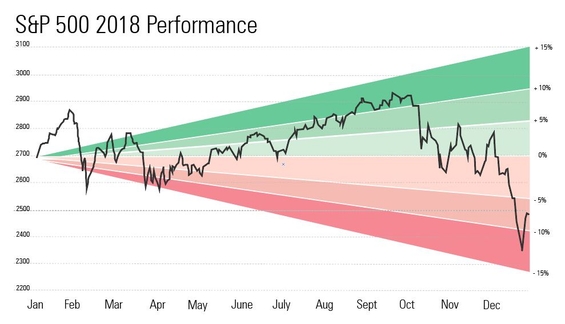
-
Volatility picked up: The losses in U.S. stocks were accompanied by a significant pickup in volatility. In the fourth quarter, the S&P 500 closed up or down more than 1% on 28 days, compared with 36 days in the first nine months of the year. What’s more, the last three months of 2018 saw 12 days with the S&P up or down 2% or more, compared with eight such days in the first three quarters.
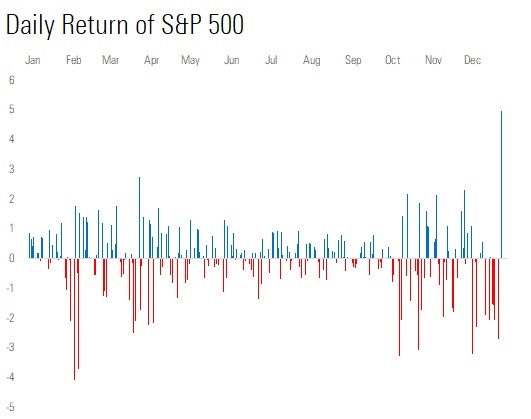
-
Rising interest rates caused investor concern: One of the major factors driving markets lower was the stepped-up efforts by the Federal Reserve to raise interest rates from the historically low levels in place since the financial crisis a decade ago. The Fed raised the funds rate four times in 2018 and signaled more rate increases ahead in 2019. Late in the year, investors pushed long-term rates lower amid concerns about future economic growth. The result was a much flatter yield curve. An inverted yield curve—where short-term rates are higher than long-term rates—has historically been a harbinger of an eventual recession, another indicator that spooked some investors. The Fed’s rate increases also served to lift the value of the U.S. dollar, which hobbled emerging markets.
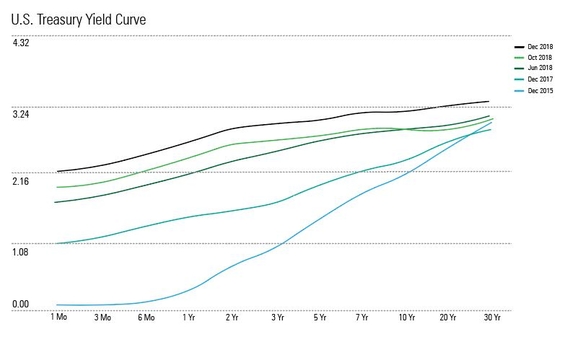
-
Trade wars and political uncertainty took a toll on markets: The trade war between the U.S. and China helped take the wind out of China’s massive economy, which had a ripple effect on the broader global economy. Meanwhile, in Europe, Brexit roiled U.K. markets and other major continental markets fell sharply. The European Central Bank also headed toward less accommodative monetary policy.
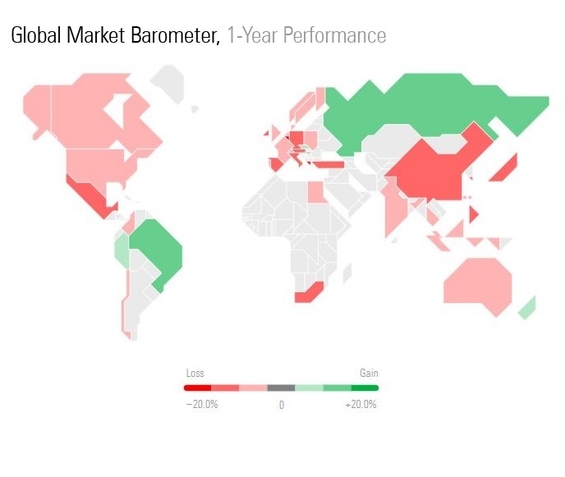
-
Growth stocks and small-company shares saw the largest declines, within U.S. market: To some degree, this could be seen as payback from a long period of outperformance for growth stocks. Typically, small-company stocks would be seen as more vulnerable to a slowdown in the U.S. economy than larger companies, which are often more diversified outside the United States. The following periodic table of Morningstar style indexes highlights the year-by-year trends in style performance. Over the past decade, growth categories have been the clear leaders, with a particular disparity in returns between large growth and large value during that time frame.
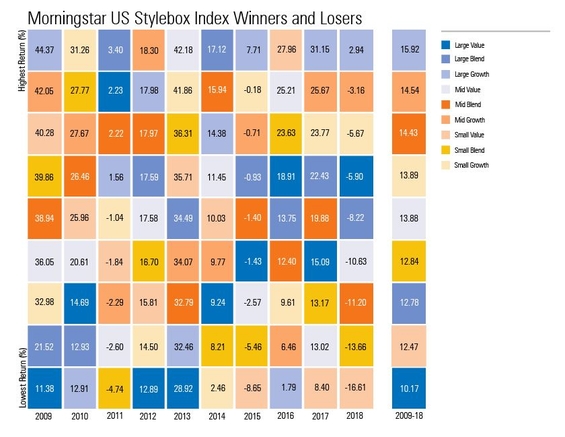
-
Longer-term returns remain relatively healthy among large and medium-size stocks: A bit of good news for investors is that, despite the pronounced sell-off, longer-term returns remain relatively healthy among large and medium-size stocks. However, small-company stock returns are now trending below long-term equity market average returns.
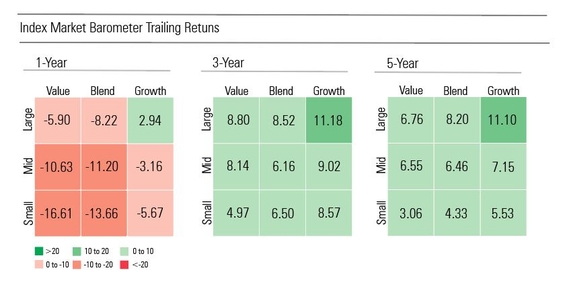
-
Undervalued equity markets pose an opportunity for investors: Those with cash on the sidelines may have opportunities to put that money to work at more attractive valuations. In just the past three months, many equity markets have gone from overvalued status to undervalued based on Morningstar’s valuation rankings. (See an explanation of the equity ratings methodology.)

-
The Morningstar® Wide Moat Focus Index℠ outperformed: Investors were also served by investing in companies with Morningstar Economic Moat Ratings of wide, such as Starbucks, up 14.4% in 2018, Intel, up 4.3%, and Medtronic, up 15.1%. Companies deemed “no moat”—those most vulnerable to competition—tended to fare much worse.
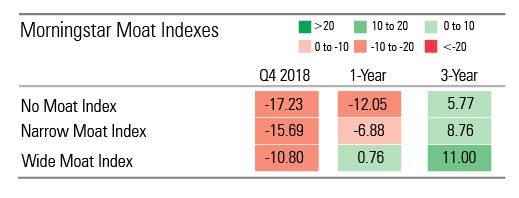
-
U.S. bond markets were spared in the fourth quarter: In the fixed-income markets, central banks took the spotlight. For U.S. bond markets, that meant the fourth quarter offered something of a reprieve from the first nine months of the year when bond prices were under pressure from the Fed’s rate increases. Although the Fed tightened again in December, worries about the pace of the economic expansion led investors to believe that the pace of Fed tightening will likely slow in 2019. That provided a window for a bounce in interest-rate-sensitive government bonds .
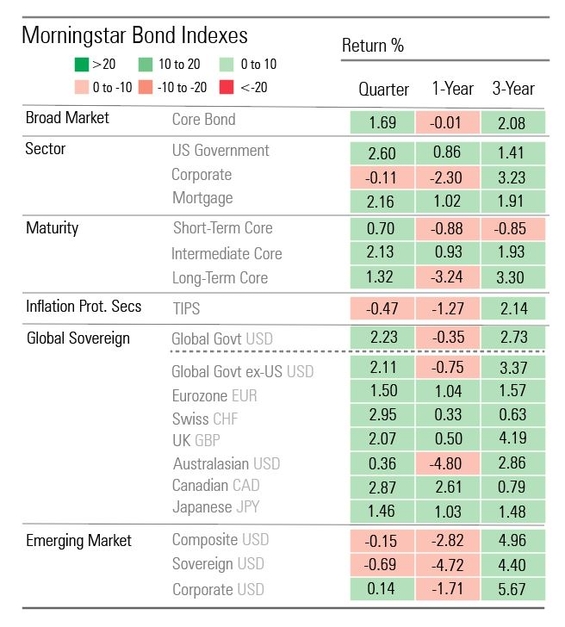
-
Credit markets experienced a different story: While government bonds found a bounce in the third quarter, it was a far different story in the credit markets, even as investment-grade bonds rallied, lower-quality debt posted swift declines amid concerns about both slowing economic growth and the potential for rising default rates in some corners of the market where lending standards have grown looser in recent years.
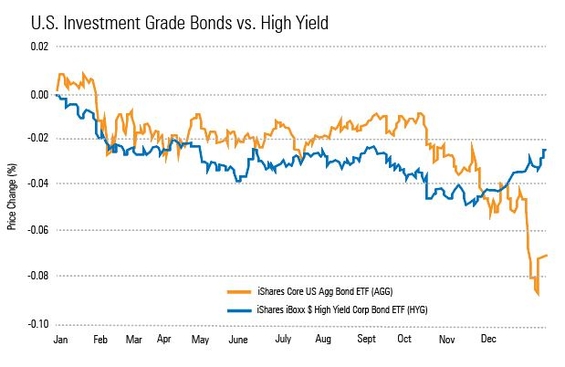
This blog post is adapted from research that was originally published in Morningstar Office℠ Cloud and Morningstar Direct℠ Research Portal. For more articles on macro and market trends from Morningstar Cloud, take a free trial or sign in.

